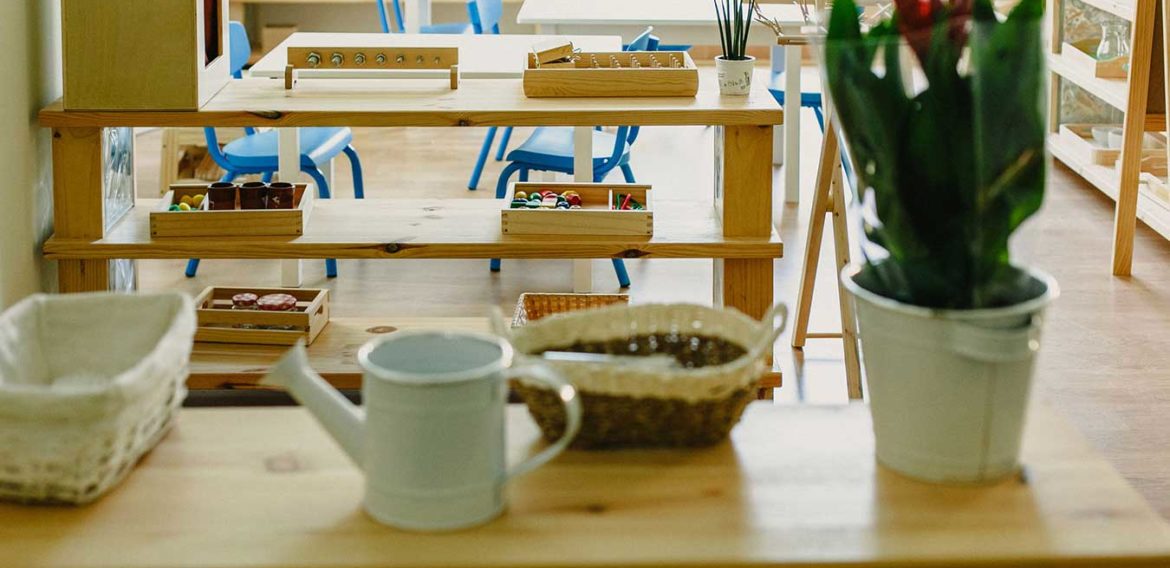Choosing the Right Montessori Environment
 Not all Montessori schools are alike.
Not all Montessori schools are alike.
I know, it seems like an obvious statement but there are numerous ways that a Montessori school can differ, and each of those things may determine whether it is a quality program that meets your expectations and the needs of your child, or a program that simply uses materials from the Montessori curriculum.
Throughout my education, my journey as a parent, and my journey as a teacher, I have seen all kinds of Montessori programs. Some are high quality; some are working to get there. Some programs blend Montessori with other curricula, and some are authentically Montessori. Typically, high quality, authentic Montessori programs come with a steep tuition bill. Luckily, we are in an educational renaissance; Montessori public schools and Montessori blends are becoming more and more common as the Montessori curriculum is paired with Common Core. Regardless of what age your child is or what type of Montessori program you choose, there are some indicators of quality you can use when looking for a high quality Montessori school:
How does it feel when you walk in?
Do you feel welcome when you walk into the building? Does your child? I have found that in any program, the little things that do, or do not, happen everyday really become some of the big things. Greeting the child every day creates a relationship of mutual respect between the teacher and the child.
Does it feel peaceful? Do you feel calm and comfortable when you’re at the school? Remember, it’s still a school and little humans like to move and make noise so it shouldn’t be completely silent and still. Peace and silence are two different things. As Maria Montessori said, “We do not consider an individual disciplined only when he has been rendered as artificially silent as a mute and as immovable as a paralytic. He is an individual annihilated, not disciplined.” In a high-quality Montessori setting, you will see children genuinely enjoying themselves and their work, and that will look different for every child.
What do the classrooms look like? What do you notice at first glance? What are the children doing?
The environment should look as if it is created for children, because it is! Low, natural-colored shelving filled with materials on trays help children become independent because they can choose their works and get them without help. The materials on the shelves are purposeful – and if you don’t know the purpose, ask! One of my favorite things to do as a teacher is to teach parents how my classroom materials are helping their child master new knowledge.
Are there independent and small group workstations?
A large amount of Montessori works are meant to be individual or small group works. Even in the higher-aged classrooms, individual activities that require large amounts of floor space are worked on daily; those activities require plenty of space for productive and focused work.
Where do the children sit? Are there rows of desks or smaller pods and workstations?
Some Montessori schools are able to use only small tables and workstations but seating for classrooms can be expensive to replace so a high-quality Montessori may still use desks, but more than likely they will be grouped in small sets or pairs.
Is there room to work on the floor?
Many Montessori materials and introductions take place on a work mat, or a rug. Children spread the rugs out on the floor and put their materials on it to work in their own space.
Do you see purposeful work being done?
Maria Montessori believed that teachers are there to help the child act for himself, will for himself, and think for himself. Essentially, the teachers are there to show children how to enjoy their work and how to be individuals. Do you see children doing repetitive worksheets or do you see children actively engaged in their own work choices? In a Preschool or Lower Elementary Montessori classroom, children are learning many things with concrete materials. For example, they are learning that the number 2 is a symbol for two items and they can use the numerals and counters to master that knowledge. You may also see children working with materials that don’t “look” like work, like a transferring activity but in reality, those materials are an imperative part of the Practical Life curriculum and strengthen a child’s muscles to prepare him or her for holding a pencil.
…And most importantly, what about the adults?
A Montessori environment can only truly be Montessori if the person who has created and arranged the environment believes in the Montessori philosophy. How can a teacher achieve a peaceful classroom if he believes in yelling? How can a teacher create independent, peaceful children if she just expects silent obedience? Every Montessorian that I know will tell you that it really does become a lifestyle.
I attended a Montessori school from preschool to sixth grade. I didn’t have formal Montessori training when I incorporated the curriculum into our house when my son was born or when I operated my home-based childcare as a Montessori program. When I was given the opportunity to receive formal Montessori training, I learned so much…but my overall outlook on life didn’t change; my philosophy was, however, shaped mostly in a Montessori setting when I was younger. Teachers who understand and believe in the Montessori method will be teachers who value continued education, peace, and creating independence for children.
If you find outstanding Montessori programs or have questions about where to start looking, I’d love to hear from you!









” A Montessori environment can only truly be Montessori if the person who has created and arranged the environment believes in the Montessori philosophy. How can a teacher achieve a peaceful classroom if he believes in yelling? How can a teacher create independent, peaceful children if she just expects silent obedience? Every Montessorian that I know will tell you that it really does become a lifestyle.”
Excellent! Many teachers should and remember see that!